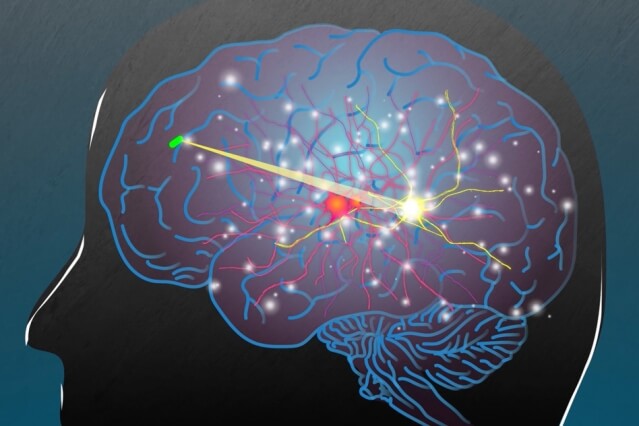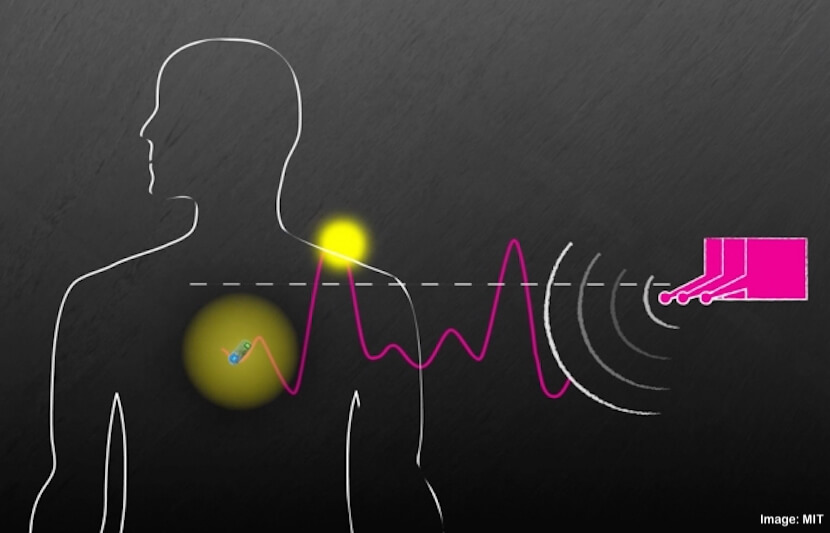A team of researchers from MIT, Harvard Medical School and Brigham and Women’s Hospital (BWH) has developed a wireless system capable of powering and communicating with devices implanted deep within the human body.
These devices could be used to deliver drugs, monitor conditions inside the body, or treat disease by stimulating the brain with electricity or light.
Prior to this, remote control devices that can be implanted in the body for medical purposes have been limited by their reliance on electricity for power, which dictated how small and long-lasting they can be.
But this team has found a way to get around this limitation.
The team’s devices are powered not by electricity, but by radio frequency waves, and can be as small as a grain of rice.

“Even though these tiny implantable devices have no batteries, we can now communicate with them from a distance outside the body. This opens up entirely new types of medical applications,” Fadel Adib, an assistant professor in MIT’s Media Lab and senior author of the study, said in a statement.
The research will be presented at the Association for Computing Machinery Special Interest Group on Data Communication (SIGCOMM) conference in August.
The team also includes: Giovanni Traverso, an associate physician at BWH, assistant professor of Harvard Medical School and research affiliate at MIT’s Koch Institute for Integrative Cancer Research; Yunfei Ma, Media Lab postdoc; Zhihong Luo, Media Lab graduate student; and Christoph Steiger, Koch Institute and BWH affiliate postdoc.
Going wireless
Currently, implantable medical devices, such as pacemakers, rely on batteries that come with a limited lifespan and take up most of the space on the device.
So, the researchers found a way to wirelessly power devices with radio waves emitted by antennas outside the body.
“Having the capacity to communicate with these systems without the need for a battery would be a significant advance. These devices could be compatible with sensing conditions as well as aiding in the delivery of a drug,” Traverso said in a statement.
However, previous research has shown this to be difficult as radio waves tend to dissipate and lose power when they pass through the body.
The team’s solution is In-Vivo Networking (IVN), a system that relies on a variety of antennas that emit radio waves of different frequencies.
Since IVN works by using slightly different frequencies, when the high points of the waves overlap, they combine to create energy.
“We chose frequencies that are slightly different from each other, and in doing so, we know that at some point in time these are going to reach their highs at the same time,” Adib said in a statement. “When they reach their highs at the same time, they are able to overcome the energy threshold needed to power the device.”
This method allows the devices to be powered indefinitely. It also allows power to be transmitted over a large area, which eliminates the need to know the exact location of a device in the body and enables multiple devices to be powered at once.
When the sensors receive a burst of power, they also receive a signal telling them to relay information back to the antenna.
The researchers believe that the signal could be used to stimulate the release of a drug, a burst of energy, or even a pulse of light.
Testing the devices
So far, the researchers have tested these devices both in the gastrointestinal tract and subcutaneously in pigs.
They found that the closer the sensor is the skin’s surface, the further away it could be powered. For instance, a sensor near the skin’s surface could be powered from up to 38 meters away, while a sensor that was 10 centimeters deep could be powered from up to a meter away.
“We have tested it up to 10 cm depth,” said Adib. “If the devices are at superficial depths, we can communicate with them from as far as 125 feet. We are working on increasing the depth and distance as well as on further miniaturizing the devices.”
Currently, the prototype device is about the size of a grain of rice, but the researchers believe they could be made even smaller since they don’t require a battery.
Applications
The researchers believe this technology will be available for human use in the next 5-10 years, providing a number of applications to the medical world.
One application could be to deliver light in order to stimulate or inhibit neuron activity through optogenetics, which could be useful in treating a number of neurological disorders.
Other applications include performing controlled drug delivery when placed inside of smart pills, to treat diseases like malaria or Alzheimer’s, or through treating diseases like Parkinson’s when integrated with deep brain tissues.
Generally speaking, the wireless devices could be used to eliminate battery-controlled implants for a variety of medical uses.
“The IVN system could be applied broadly to both sensing and therapeutic devices including those designed to release drugs,” said Traverso.



